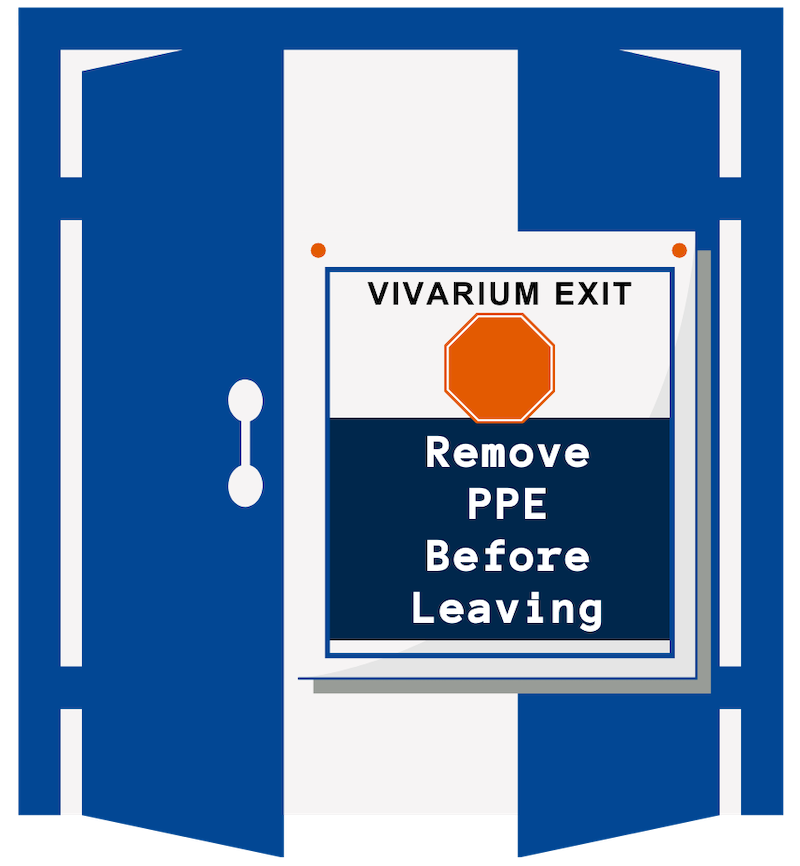To protect the health and safety of research personnel, the animals entrusted to our care, and the larger U-M research community, Personal Protective Equipment (PPE) is required when working in and around animal facilities.
Required PPE for individual rooms and circumstances is based on an Environment, Health & Safety (EHS) risk assessment that takes into account:
- The type and quantity of hazardous materials present,
- Engineering controls (e.g., fume hood, snorkel) in place, and
- Administrative controls (such as limiting the amount of time handling materials or limiting access) to reduce exposure.

Inside Animal Care Facilities
All personnel entering an animal care facility are responsible for wearing appropriate PPE. To determine what is considered appropriate PPE, individuals should:
- Refer to information provided in the EHS Animal Handler PPE Chart
- Comply with EHS Safety Findings outlined in the eRAM protocol workspace
- Follow directions on all posted signage for specific room entry instructions and appropriate donning/doffing procedures
- Adhere to the PPE recommendations determined by EHS in consultation with Occupational Health Services, which account for an individual’s personal medical history and potential exposure risk(s)
Outside Animal Care Facilities

While the donning of appropriate PPE is critical for minimizing exposure to hazards INSIDE the laboratory and animal use area(s), NOT wearing PPE outside of these designated areas is just as important.
Locations where it is inappropriate to wear PPE include:
- Elevators,
- Restrooms,
- Corridors/hallways, and
- Other areas outside of the laboratory.
When individuals are seen wearing PPE – such as gloves and lab coats that are normally reserved for laboratory/research use only – in public spaces, the general perception is that the individual has been handling something that is potentially harmful.
Remember, chemical and biological contaminations may not always be visible. Therefore, removing PPE before leaving your work area – regardless of visible soiling – and using assigned outer coverings (i.e., gowns) inside an animal facility will help eliminate the risk of cross-contamination.
These safeguards will also protect the larger U-M community from potential exposure to animal allergens or other hazards that may be carried on soiled lab coats, gowns, and/or scrubs.
Individual departments should make arrangements to have protective clothing professionally laundered at a commercial company (i.e., Cintas, Sohn Linen) that is equipped to provide these services.
Lab coats, uniforms, and other dedicated PPE should NOT be laundered at home.

Where to Learn More
- A complete list of proper laboratory attire can be found in the U-M Chemical Hygiene Plan.
- To learn more about the minimum PPE standards needed to control or prevent exposure to zoonotic organisms and allergens in animal research and instruction, review the Policy on Personal Protective Equipment While Conducting Animal Activities.
- General, non-urgent questions may also be directed to [email protected].
Finally, don’t be afraid to remind and educate others you see who may be wearing PPE incorrectly. In order to maintain a safe and controlled research environment we need everyone to do their part!